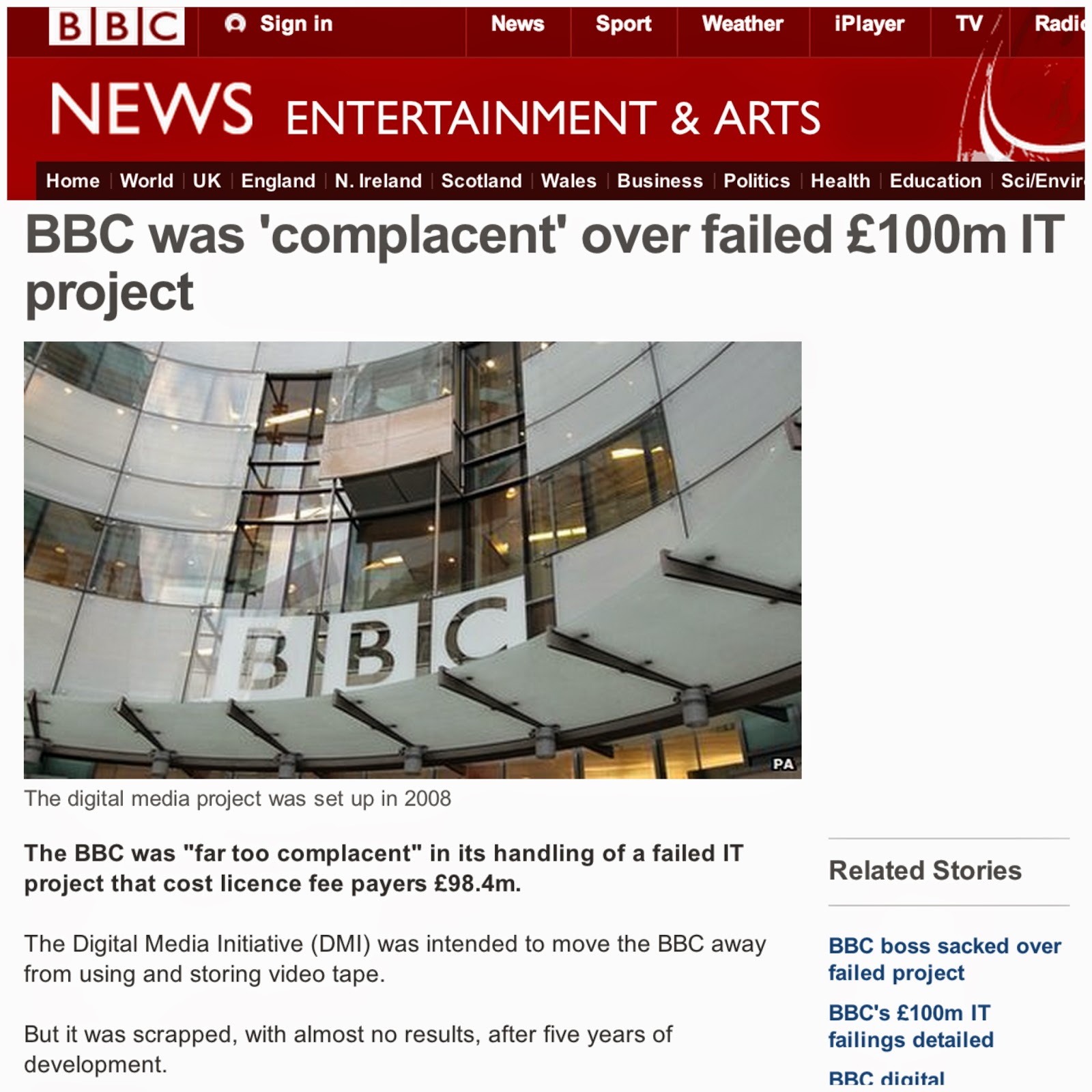BIG NEWS: Microsoft & Salesforce.com Annouce Partnership!!!!!
For those who haven't seen the news that is coming out of the US this evening, Microsoft new CEO Satya Nadella has announced a partnership between Microsoft and Salesforce.com.
This is really REALLY big news....and not particularly great news. For at least 4 years Microsoft have had SalesForce in their sights. In 2010 it really kicked off when law suits were filed for "patent infringements" To say SalesForce were equally "miffed" was an understatement
In last 2 years in particular, it seemed that Microsoft's singular commercial goal was to wipe SalesForce off the map. Even Microsoft's pricing strategy for CRM Online (MS CRM Professional Licence was priced the same as SalesForce "Basic" licence) seemed like an ironic slap in the face to SalesForce
Now Microsoft seem to want to play nice....
Don't.....quite....know what to say really....
On the face of it, this is not a smart move AT ALL. Integrating SalesForce and Office365 surely removes what should be a core USP of Microsoft Dynamics CRM. Also, does Microsoft REALLY want to present SalesForce as a good solution to Office365 customers looking for a CRM Solution??
There is one possibility but it rely's on Microsofts new CEO Satya Nadella being sharper than initially appears. If this was a bold first move to an acquisition of SalesForce by Microsoft this could make for more drama than a CRM Industry version of Eastenders. Even without an acquisition, there could be a positive angle. SalesForce do have a significant customer base. Get them on Office365, impress them with SharePoint and OneDrive and...."oh by the way...did you know that Microsoft Dynamics CRM is way more awesome than this SalesForce rubbish????"
Am I trying to put a positive spin on this? Yes...but time will tell.
Needless to say this hasnt been met with much enthusiasm in the twittersphere...
Please feel free to use the comments section to discuss your insights/thoughts on this.
Thanks
Joel
Now Microsoft seem to want to play nice....
Don't.....quite....know what to say really....
On the face of it, this is not a smart move AT ALL. Integrating SalesForce and Office365 surely removes what should be a core USP of Microsoft Dynamics CRM. Also, does Microsoft REALLY want to present SalesForce as a good solution to Office365 customers looking for a CRM Solution??
There is one possibility but it rely's on Microsofts new CEO Satya Nadella being sharper than initially appears. If this was a bold first move to an acquisition of SalesForce by Microsoft this could make for more drama than a CRM Industry version of Eastenders. Even without an acquisition, there could be a positive angle. SalesForce do have a significant customer base. Get them on Office365, impress them with SharePoint and OneDrive and...."oh by the way...did you know that Microsoft Dynamics CRM is way more awesome than this SalesForce rubbish????"
Am I trying to put a positive spin on this? Yes...but time will tell.
Needless to say this hasnt been met with much enthusiasm in the twittersphere...
Please feel free to use the comments section to discuss your insights/thoughts on this.
Thanks
Joel
Friday, 30 May 2014
Posted by Unknown
The Million Dollar Question - How To Get Buy In! - Part 2 (End Users)
If you read the
second article in our 3-part series on how to get buy-in for your CRM project.
Part 1 of the series focused on getting management teams on board. If you
missed it, go and have a look here. In this article we will discuss what is
probably your toughest audience for getting buy-in…
- End Users - Getting buy-in from the day-to-day users of CRM can be a huge challenge. Some users are very resistant to change. Others, are desperate to cling onto the existing system. Ironically, these users often are hugely critical of the way things are done, but when change is on the horizon suddenly the current way is the best way! Still, yet others are either "too busy" or just plain uninterested.
Been there? Done it?
Got the t-shirt? Like with management, In my experience there is no standard
formula for success with getting buy-in from end users, and a tailored approach
is a must. As they are probably your biggest group, you may need to adapt your approach for
different teams of users so you will need to be very flexible . So what
measures are available to you?
Measure - Issue Initial Feedback Questionnaires
- Who For - End Users
- What To Do - Simply inviting
users to a session to discuss CRM without any 'warm-up' will
 ensure noting
other than a very dry boring meeting. To combat this, issue an
initial feedback questionnaire to the team asking them questions such as,
what do they currently do in their day to day job? What systems do they
use? What would they like to change? Etc. The purpose of these is not for them to write down
all their requirements but to get them thinking before they come into the
feedback sessions, making those sessions much more productive
ensure noting
other than a very dry boring meeting. To combat this, issue an
initial feedback questionnaire to the team asking them questions such as,
what do they currently do in their day to day job? What systems do they
use? What would they like to change? Etc. The purpose of these is not for them to write down
all their requirements but to get them thinking before they come into the
feedback sessions, making those sessions much more productive
Measure - Empower Users To Take Responsibility
- Who For - End Users
- What To Do - We discussed this in our last article as a strategy that benefits the management team but in truth it is a huge way to get buy-in from end users too. User will feel much more engaged in the entire process and get on board with process changes quicker if they feel that they have the power to make suggestions and decisions that are taken on board. This can be done by asking Power-Users to sign-off functionality before it gets developed. This often also has the knock on effect of making these individuals an advocate of the system when it is deployed

Measure - Do What You Said You Would When You Said You Would
- Who For - End Users
- What To Do - We discussed this in our last article as a strategy that benefits the management team but in truth it is a huge way to get buy-in from end users too. Often a project of this size is the next in a list of IT implementations, systems, processes etc. and you may find that previous promises made that were never delivered can impact users view of your project. The simplest and quickest way to get round this is to do what you said you would when you said you would. Cancel/Rearrange meetings as rarely as possible.

Measure - Carry Out Dual-Phase UAT
- Who For - End Users
- What To Do - UAT is essential and yet it can often be where a project really slows, sadly so close to the finish line! To combat this, carry out 2 phases of UAT. The first phase should be carried out with the project lead with the purpose of verifying that what has been delivered meets what was requested in the documented solution. The second phase is where the system is verified with the end-users, checking that nothing major has been missed or not delivered.
Measure - Process Oriented Training Materials
- Who For - End Users
- What To Do -Avoid simply handing users manuals that cover only the basics of CRM or worse the detailed minutia of how to administer CRM. This will bore your users and turn them off your system. Instead, create manuals and training programs that focus on how the user groups will follow the company process. Accompanied with screen-shot manuals, this approach will make users feel empowered to do their job confidently in CRM from day 1.

Measure - Make Good Use Of Videos
- Who For - End Users
- What To Do - It’s a nightmare getting all the individuals you need together for training. Using screen capture software to create short videos that demonstrate how to use certain aspects of the system can be a great way of not only mopping up those who couldn’t attend but also providing a first stop for users wanting a refresh on something from the training. Top Tip: Keep them short! Users are much more likely to watch a video if it is 3-5 mins. long

Measure - Run Project Feedback Sessions
- Who For - End Users
- What To Do - Throughout the project, run project feedback sessions to not only gather feedback from end users on how things are going from their perspective but also to give them feedback on how the project is progressing. There can be quite a gap between stages for the end users, particularly during the development phase. Keeping them up-to-date on progress will reinforce that their hard work and input hasn’t been forgotten.
None of these alone
will guarantee success. Much depends on the size of your organisation and a
realistic view of what is achievable. However, using a combination of these
will really help your users feel engaged with and when end users feel like they
have a say in the project this is only a positive thing.
But what about
getting buy-in from an often forgotten area, the IT department? This will be
discussed in the final article in our series out on Tuesday
If you are
struggling with user adoption and would like some help and support, we would
welcome the chance to discuss this further with you. We have worked with
thousands of users over the years and we are confident that we can help support
you. To arrange a discussion, please complete the Contact Us page
Hope this helps,
please feel free to add any comments below.
Joel Abbott - xRM
Consultant.
Friday, 23 May 2014
Posted by Unknown
The Million Dollar Question - How To Get Buy In! - Part 1 (Management)
I recently attended
the CRM User Group at the Microsoft Campus in Reading (UK). If you haven't
gotten involved with the CRM User Group yet I would thoroughly recommend it. It
is run by a Microsoft MVP called Adam Vero. Adam is a top bloke and
fantastic MCT so definitely worth attending as this event attracts a good
number of users, administrators and CRM Consultants too, all looking to share
their knowledge.
Anyway, back on
topic….
We had a round table
discussion about managing CRM projects and the issue that kept coming up again
and again was the age-old question for any Microsoft Dynamics CRM
Administrator……..
How do I get users, management, even IT to buy-in to
both the product and the project?
Now, anyone who has
ran any sort of software implementation project
will have faced this challenge before. The reason for a lack of, or
perceived lack of, interest from your user base can be for different reasons depending
on the users:
- Management - The VAST majority of successful implementations I have been involved in were lead from the top. Far from just ensuring that the project is delivered on time and signing the cheques, a good management team will support both the project processes (detailed scoping & requirements gathering, development etc..) but will also be fully engaged in any changes to business process. Without this level of backing, delivering a successful CRM project (i.e. one that delivers real, tangible business benefits short and long term) is incredibly difficult.

NB: This is also true of Users & IT but we will be discussing this in Parts 2 & 3 of
this series.
Ok, so with that
thoroughly depressing picture what can be done? In my experience there is no
standard formula for success with this, but a tailored approach is crucial.
Depending on what issues you are experiencing, you can create a strategy of
measures that work for you. This can be flexible also so that as the user
adoption issues change, your strategy for dealing with it can too. So what
measures are available to you?
Measure - Establish A Project Board
- Who For - Management
- What To Do - Managing a CRM project can be a very lonely place, whether you are an outside consultant or an internal project lead. Every project will have its ups and downs and support from senior management is absolutely essential. Forming a Project Board is different from your project team. The project team will consist of individuals at all levels. However the Project Board will generally consist of (1) the Project Lead, (2) the main Project Sponsor and (3) at least 1 other member of senior management (director level). This means that when high level strategy is being discussed, a fair and accurate picture of your progress is given. In addition, when the project slows due to a lack of a decision being taken, you have individuals with the authority to either make the decision or take the delay on the chin on your behalf.

Measure - Control The Message
- Who For - Management
- What To Do - Ensure that very early on you identify the objectives of your project from the perspective of the management team and ensure that progress on these objectives is regularly measured and reported on. This can be a challenge, particularly when you have issues but control how those issues are communicated. If they have no impact on the deliverability of the management objectives don’t open your mouth unless necessary.

Measure - Issue Weekly Project Updates
- Who For - Management
- What To Do - Any CRM project
will ebb and flow when it comes to progress. Meetings with users to
under
stand feedback, getting documentation and sign-off and overcoming technical issues can all seem to take time with not much to show for it. This is why issuing weekly project updates is so critical. This allows you to front-up to the management team exactly what IS being achieved and where there are sticking points can be an excellent way of demonstrating the impact of these. This means that management are far more likely to support rather than question your progress.

Measure - Empower Users To Take Responsibility
- Who For - Management
- What To Do - An approach that is often taken by management teams is the sledgehammer approach ("Your having this system whether you like it or not!"). This often ends in wasted money, time and enthusiasm. Empowering users to give input goes a long way to ensure this doesn’t happen. Make it clear to end users who are involved that not only is there feedback welcome but it will have a direct impact on what the system looks like. Let them have considerable input into decisions, particularly around business process.

Measure - Do What You Said You Would Do When You Said You
Would
- Who For - Management
- What To Do - This is probably the simplest of measures but is so very important. Set realistic deadlines, push back if you feel expectations that are being put on you or the team are unrealistic, even putting your concerns down in writing, but then when you commit to a date…meet it. Trust is a key issue in any project as you need the management team to trust your view on how the project is going. If you make promises that go unfulfilled this trust will evaporate. On the other hand, if you do what you said you would when you said you would, it will engender support from those overseeing the project.

As we said at the
start, none of these are the proverbial silver bullet, nor will using all of
them guarantee success. Much depends on the size of your organisation and a
realistic view of what is achievable. However, using a combination of these can
get you a long way towards delivering a great project. Microsoft Dynamics CRM
is by far the best CRM solution in the marketplace. A great project delivery
will only enhance the way your organisation views it and you!
But what about
getting buy-in from End Users? This will be discussed in the next article in
our series out on Friday
If you are
struggling with user adoption and would like some help and support, we would
welcome the chance to discuss this further with you. We have worked with
thousands of users over the years and we are confident that we can help support
you. To arrange a discussion, please click here
Hope this helps,
please feel free to add any comments below.
Joel Abbott - xRM
Consultant.
Wednesday, 21 May 2014
Posted by Unknown
Service & Case Changes…Small But Mighty! Microsoft Dynamics CRM 2013 - Spring Wave
As part of
the Microsoft Dynamics CRM 2013 Spring Wave there are a whole host of updates
to different areas of this fantastic solution. To get more information on all
the changes, you can find the release preview guide here.
In this
blog I just wanted to focus on a few of the changes to the Cases entity. There
are a number of changes but I am focusing here on the 3 that I believe will
have the greatest impact as customers have continuously asked for them:
Finding Similar Cases:
On any
support desk, knowledge is power and sharing that knowledge is key . There are
a number of ways you could do this but what has been lacking from the Service
offering Microsoft Dynamics CRM is the ability to quickly, efficiently and
easily find cases similar to the one you are currently working on. This has
been included in the Spring Wave. Without leaving the case record you are
working on, your service agent can click on the Similar Cases lookup and find a
list of suggested cases. From here they can link these or other cases they know
to be relevant to the case they are working on. Perhaps the issue was handled
in 3 or 4 different ways in the past. No problem, link all the cases and your
agent will have all the information at their fingertips.
The
suggestions that CRM makes are based on the related "Subjects". I
would like to see this work a little smarter as I know that the subject tree
hasn’t always proved to be effective for my customers but it’s a great start.
Merging Cases:
For some
time in CRM there has been the ability to merge records. However, the ability
merge cases is extremely useful. Not only does it merge all activities and
associated records from your merged case to your new one but it allows you to
merge more than a single record at a time. This means that, for example, if you
get a user who is very "enthusiastic" about their issue and calls
through to your helpdesk 4 or 5 times logging the same case, these can be
merged into a single case very quickly and easily. Brilliant!
Parent & Child Cases:
This
feature has been a LONG time coming. I have often had to build this manually
for customers who were bemused at the fact that they couldn’t do this "out
of the box". So it is with great delight that we see the ability to have
parent and child cases in the Spring Wave. There are two main scenarios were
this is invaluable:
One issue from same
customer and work needs be done by other teams
Same issue effecting
multiple customer from same organisation
How is it
done? Very easily in one of 2 ways. First you can click on the "Create
Child Case" button on your "Parent" case. This will create a new
case that is already linked to the parent one and visible as such.
Secondly,
you can associate other pre-existing cases as child cases. Not only can this be
done by using the Child Cases Sub-grid on the Parent Case form but it can also
been done in bulk by going to a view of cases, selecting those you wish to make
child cases, clicking on the "Associate Child Cases" button and
selecting the parent.
Its
important to note that you only have a single "level" in the
parent/child hierarchy. If Case B is a child of Case A then Case B cannot be a
parent of any other case. If you delete Case A but leave Case B in place, then
this can become a parent case but not otherwise.
I know
these may not be as razzmatazz (I should get an award for getting that word in
a blog post!) as Social Listening or Microsoft Dynamics Marketing but these
changes, small though they are, have been well thought through by the dev team
and Microsoft and will deliver real tangible benefits to our customers.
My
information is based on the following information eBook provided by Microsoft
and as such may be subject to change as but it matches up with all we have told
already so we have no reason to doubt what this information tells us
Please feel
free to comment below
Thanks
Joel Abbott
xRM
Consultant
Tuesday, 20 May 2014
Posted by Unknown
Microsoft Dynamics CRM 2013 Mobile Options - xRM Product Demonstration
"
Hope this helps!
Thanks
Joel Abbott
Managing Director
xRM Consultant (UK) Ltd
Tuesday, 22 April 2014
Posted by Unknown
Apex Planner v GroupCalender for Microsoft Dynamics CRM 2013 - xRM Product Demonstration
I was recently asked about the how the calendar and scheduling functionality works in Microsoft Dynamics CRM 2013 and unfortunately all I could think of was "not as well as you would think" (I THOUGHT this...didn't say it!) There is however a number of great extensions out in the ISV community that extend this functionality in Microsoft Dynamics CRM. So, i decided to pull together a short video to show how the two best solutions i have come across compare against each other....
Hope this helps!
Thanks
Joel Abbott
Managing Director
xRM Consultant (UK) Ltd
Friday, 18 April 2014
Posted by Unknown
Sales Entity Overview - xRM Quick Look
I was recently asked about the sales process in Microsoft Dynamics CRM 2013 and to give them a quick overview of how it works and potentially how they could use it. So, i decided to pull together a short video to show how these entities hang together in quick overview. Hope this helps...
Thanks
Joel Abbott
Managing Director
xRM Consultant (UK) Ltd
The Money Pit of CRM Deployment! Delivering On-Time And In-Budget

Do you remember the film The Money Pit? Tom Hanks & Shelly Long star as home renovators who start with big dreams for their new home ultimately to realise that it will suck every penny from their lives.
Why are we talking about this? Many businesses would agree that, all too easily, an IT Project can become a Money Pit in its own right. Even the BBC has suffered from what the city calls "White Elephant Syndrome". They paid over £100 million for an IT project called the Digital Media Initiative (DMI) that was intended to move the BBC away from using and storing video tape, sounds simple enough? Not so. After 5 years and producing "almost no results" it was branded a complete failure.
Now as we sit smugly (before realising that the £100 million came from YOUR TV licence) reflecting on the failures of the poor BBC IT Dept. ask yourself, is this really so difficult to do? On more than just a few of the projects i have worked on, the reason we have been brought in is because the project is over-budget, behind schedule and no where near being delivered. Why? There can be any number of reasons from bad management of resources and poor planning to bad technical choices. So if your planning to implement a CRM solution, how do you get it right? Here a four key points that you need to seriously consider:
Choose The Right Product
 One customer came to us having spent over £150,000 on a CRM solution. Once the first phase of the project was over, they were told by the product vendor that no further development could be done on the solution meaning they were stuck with what they had. And you guessed it....what they had been left with was not fit for purpose! This example clearly shows how important it is to choose the right product.
One customer came to us having spent over £150,000 on a CRM solution. Once the first phase of the project was over, they were told by the product vendor that no further development could be done on the solution meaning they were stuck with what they had. And you guessed it....what they had been left with was not fit for purpose! This example clearly shows how important it is to choose the right product. Any product that is selected should be both flexible enough to accommodate what you want from it now but also have enough scope to grow with your business. The only product that truly fits the bill in this regard is Microsoft Dynamics CRM. I have implemented Microsoft Dynamics CRM for small businesses and major UK corporations. Microsoft Dynamics CRM is flexible, easily customised and extended with products from the huge amount of ISV's making custom solutions to suit your needs.
In addition, any product should provide value for money. Microsoft have clearly taken a view that providing their customers with huge value for money over making a quick buck is the way to go. This can be seen from the huge improvements and additional functionality that Microsoft are including for free as part of the update roll-ups.
Choose The Right Partner
This is one of the most important decisions you will make and can be the difference between success and failure. A good partner with extensive experience can guide you through the decision making process and help you to avoid the pitfalls. A bad partner can not only prevent your solution from being delivered but cost you the earth! So what should you look for? 3 things...
 First, your partner must have relevant experience that you can independently measure. Ask your potential partner for a client list and ask how many would be willing to provide a reference. The right response is "you can speak to any of our customers!" When you do speak to them, don't be afraid to ask hard questions (Deliver on time? What were they like to work with? Were their cost estimations accurate?).
First, your partner must have relevant experience that you can independently measure. Ask your potential partner for a client list and ask how many would be willing to provide a reference. The right response is "you can speak to any of our customers!" When you do speak to them, don't be afraid to ask hard questions (Deliver on time? What were they like to work with? Were their cost estimations accurate?). Second, your partner must be easy to get along with. Before you dismiss this as a nice-to-have, trust me, its crucial. You will be spending A LOT of time with your chosen partner and especially the project liaison. At times you will see them more than your family so if your project liaison is an idiot it will seriously impede the smooth running of your project so ask for your project liaison to be included in meetings right from the start.
Finally, take a holistic view of partner selection. In comparing partners, so many organisations will focus on only the the technical aspects of the offering from each partner, or even worse focus solely on the price. Take into consideration all aspects of the offering that the partner provides (Experience, Approach, Cost, Company History & Ethics, Training Experience etc...) Doing this may mean you don't select the cheapest option, but this will cost you far less by the end of the project. I'm sure there are many other things that you can think of when selecting a partner but these have shown themselves to be basic essentials.
Choose The Right Approach
Historically, the classic software delivery approach was known as the "Waterfall" approach. Waterfall basically refers to the following:
- Perform a high level scope of the requirements
- Review with client
- Perform more detailed requirements gathering
- Outline the detailed solution proposed
- Develop the entire solution
- Go Live!
I realise that this is perhaps a little simplified but in short, what this means is that you gather the requirements (no matter how extensive), develop it, then deliver it.Sounds good yeah? It is with one problem. Generally speaking, the requirements are so extensive that the development period takes 6 month plus. This means that in between gathering the requirements and finishing the development 6-8 months at least has passed! Most organisation will have changed or adjusted their processes 2 or 3 times during that period meaning some (and at worst ALL) of your changes are no longer valid. To deal with this you may hear partners talking about using an Agile project methodology. An Agile methodology involves making small iterative changes and regularly reviewing these with the user who requested it. This means that your project can handle changes much more effectively. However, be cautious. A number of organisations i have worked with have found that while Agile helps them adapt and deliver small changes quickly, its all too easy to lose sight of the bigger picture. A solution can grow organically and unless there is a tight control on the changes that focuses on the bigger project aim, you can find yourself spending the same money but having a system that is a mish-mash of functionality from users, some of whom may no longer even be with you anymore.
To combat this, i recommend my customers to adopt a combination of the best of both:
- Take the time to conduct a proper and full requirements gathering exercise
- Document clearly all changes that have been requested and prioritise these both by the business benefit and cost
- When documenting the solutions add 30% of the development time on top to review the changes with the user. This includes allowing them to be engaged and make minor modifications
- With all parties, and based on the priorities divide, the requirements up into project stages. It really doesn't matter if you have 2 or 200 stages, but these must be manageable and generally deliverable within a 2 month period.
- Have weekly and monthly reviews of project progress
- As each part of the solution is developed, use the time allotted earlier to engage with the users allowing them to verify what you are doing. This will also reduce the amount of time required for UAT and Training
- Any change that requires a larger modification should be removed from the current phase and re-scoped preventing any lag on delivery of the current phase.
There are still pitfalls to be found, but in general i find that this approach gives a good mix of the two project management models allowing you to get the best from both.
Plan Your Work, Work Your Plan
 Its not new, but this old adage applies here and particularly in the requirements gathering phase.
Its not new, but this old adage applies here and particularly in the requirements gathering phase. Take as much time as you can in gathering the requirements and getting these signed off before you start development. This isn't as easy as it sounds. The moment a project is started, senior management will be champing at the bit to see "something" for all the work that is going on. This isn't easy but its absolutely essential to not allow the initial planning stages to be rushed. No one will thank you for rushing into development and not delivering what is truly needed or nothing at all, least of all senior management. One client i worked with on a project spent 6 months gathering requirements, making organisational changes, running focus groups, reviewing the proposed solutions before starting development. The development process only lasted 3 months. On paper, this seems crazy and yet the project was delivered on time, within budget and with functionality that provided real benefits.
Conclusion
If you would like any help with your project please don't hesitate to contact me.
Joel Abbott - Managing Director
xRM Consultant
Saturday, 12 April 2014
Posted by Unknown
Knowledge Base Functionality in Microsoft Dynamics CRM 2013 - xRM Quick Look
Hi All,
One of the features of Microsoft Dynamics CRM that is often under-utilised is the Knowledge Base functionality. With an ever increasing number of organisations using Microsoft Dynamics CRM for service desks, a good integrated Knowledge Base solution can be a huge benefit. However, as few people use it, few consultants have much experience in setting it up and using it.
For everyones benefit, I have pulled together a very brief overview of the Knowledge Base functions in the video below....
Hope its useful!
Thanks
Joel Abbott
xRM Consultant (UK) Ltd
Universal Search - xRM Product Demonstration
Hi Guys,
A key problem facing many Microsoft Dynamics CRM users is the ability to quickly search for records in their organisations across multiple entities. Quick search is great but only covers a single entity at a time. Power Objects Global Search is great but very detailed and also comes at a cost. Whats the answer? Sonoma Partners have produced a solution called Universal Search which not only provides a fantastic cross-entity search functionality but its also free!! I have produced a video demonstration of the product to give you an idea of how it can be used...
Thanks
Joel Abbott - xRM Consultant

























